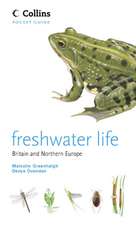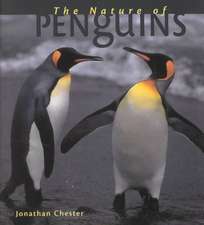Rotifer Symposium V: Proceedings of the Fifth Rotifer Symposium, held in Gargnano, Italy, September 11–18, 1988: Developments in Hydrobiology, cartea 52
Editat de C. Ricci, T.W. Snell, C.E. Kingen Limba Engleză Paperback – 26 sep 2011
Din seria Developments in Hydrobiology
- 18%
 Preț: 1229.10 lei
Preț: 1229.10 lei - 18%
 Preț: 959.98 lei
Preț: 959.98 lei - 18%
 Preț: 963.91 lei
Preț: 963.91 lei - 15%
 Preț: 648.24 lei
Preț: 648.24 lei - 15%
 Preț: 637.89 lei
Preț: 637.89 lei -
 Preț: 378.23 lei
Preț: 378.23 lei - 15%
 Preț: 644.95 lei
Preț: 644.95 lei - 18%
 Preț: 952.09 lei
Preț: 952.09 lei - 20%
 Preț: 558.87 lei
Preț: 558.87 lei - 18%
 Preț: 1833.65 lei
Preț: 1833.65 lei -
 Preț: 393.59 lei
Preț: 393.59 lei -
 Preț: 406.54 lei
Preț: 406.54 lei - 18%
 Preț: 1226.73 lei
Preț: 1226.73 lei - 18%
 Preț: 956.99 lei
Preț: 956.99 lei -
 Preț: 388.87 lei
Preț: 388.87 lei - 24%
 Preț: 1060.51 lei
Preț: 1060.51 lei - 18%
 Preț: 1229.28 lei
Preț: 1229.28 lei - 20%
 Preț: 569.30 lei
Preț: 569.30 lei -
 Preț: 368.79 lei
Preț: 368.79 lei - 24%
 Preț: 817.46 lei
Preț: 817.46 lei - 18%
 Preț: 958.25 lei
Preț: 958.25 lei - 18%
 Preț: 953.03 lei
Preț: 953.03 lei -
 Preț: 384.75 lei
Preț: 384.75 lei - 24%
 Preț: 1582.91 lei
Preț: 1582.91 lei - 24%
 Preț: 1051.68 lei
Preț: 1051.68 lei - 18%
 Preț: 943.57 lei
Preț: 943.57 lei - 18%
 Preț: 1235.76 lei
Preț: 1235.76 lei - 24%
 Preț: 800.02 lei
Preț: 800.02 lei - 24%
 Preț: 803.55 lei
Preț: 803.55 lei - 18%
 Preț: 948.29 lei
Preț: 948.29 lei
Preț: 413.54 lei
Nou
Puncte Express: 620
Preț estimativ în valută:
79.13€ • 82.100$ • 65.88£
79.13€ • 82.100$ • 65.88£
Carte tipărită la comandă
Livrare economică 01-15 aprilie
Preluare comenzi: 021 569.72.76
Specificații
ISBN-13: 9789401066945
ISBN-10: 9401066949
Pagini: 456
Ilustrații: 464 p.
Dimensiuni: 210 x 280 x 24 mm
Greutate: 1.02 kg
Ediția:1989
Editura: SPRINGER NETHERLANDS
Colecția Springer
Seria Developments in Hydrobiology
Locul publicării:Dordrecht, Netherlands
ISBN-10: 9401066949
Pagini: 456
Ilustrații: 464 p.
Dimensiuni: 210 x 280 x 24 mm
Greutate: 1.02 kg
Ediția:1989
Editura: SPRINGER NETHERLANDS
Colecția Springer
Seria Developments in Hydrobiology
Locul publicării:Dordrecht, Netherlands
Public țintă
ResearchCuprins
Rotifer study as a way of life.- Rotifer study as a way of life.- One: Ecology.- Food.- Food limitation and body size in the life cycles of planktonic rotifers and cladocerans.- Is food availability the main factor controlling the abundance of Euchlanis dilatata lucksiana Hauer in a shallow, hypertrophic lake?.- Influence of cyanobacterial diet on Asplanchna predation risk in Brachionus calyciflorus.- Nutritional effect of freshwater Chlorella on growth of the rotifer Brachionus plicatilis.- Life history characteristics of Brachionus plicatilis (rotifera) fed different algae.- Feeding kinetics of Brachionus plicatilis fed Isochrysis galbana.- Competition.- Epizoic and parasitic rotifers.- Interrelations of rotifers with predatory and herbivorous Cladocera: a review of Russian works.- Competitive interactions between the rotifer Synchaeta oblonga and the cladoceran Scapholeberis kingi Sars.- Autoecology.- Salinity and temperature influence in rotifer life history characteristics.- Empirical evidence for a complex diurnal movement in Hexarthra bulgarica from an oligotrophic high mountain lake (La Caldera, Spain).- Morphological variation in Kellicottia longispina.- Morphological structure and functional patterns of Keratella cochlearis (Gosse) populations in stratified lakes.- The development of Hexarthra spp. in a shallow alkaline lake.- On choice of substrate and habitat in brachionid rotifers.- Temporal analysis of clonal structure in a moss bdelloid population.- Horizontal distribution of the plankton rotifers Keratella cochlearis (Bory de St Vincent) and Polyarthra vulgaris (Carlin) in a small eutrophic lake.- Oviposition behavior of the littoral rotifer Euchlanis dilatata.- Developmental times of Synchaeta oblonga eggs from the Danube (Austria).- Communities.- Community structure and coexistence of the rotifers of an artificial crater lake.- The rotifer communities of acid-stressed lakes of Maine.- Composition and distributional patterns in arctic rotifers.- Abundance and diversity of planktonic rotifers in the Po River.- Rotifer distribution in relation to temperature and oxygen content.- Patterns in the composition of the rotifer communities from high mountain lakes and ponds in Sierra Nevada (Spain).- Rotifer associations of some wetlands in Ontario, Canada.- Opportunist rotifers: colonising species of young ponds in Surrey, England.- Percentage of rotifers in spring zooplankton in lakes of different trophy.- Tasmania revisited: rotifer communities and habitat heterogeneity.- Occurrence of Rotifera in the field under natural and intentionally-changed conditions. II. Lake Numasawa.- Two: Taxonomy and Morphology.- The skeletal muscles of rotifers and their innervations.- Classical taxonomy and modern methodology.- Mastax morphology under SEM and its usefulness in reconstructing rotifer phylogeny and systematic.- Problems in taxonomy of rotifers, exemplified by the Filinia longiseta-terminalis complex.- Systematics, reproductive isolation and species boundaries in monogonont rotifers.- Phylogenetic relationships within phylum Rotifera: orders and genus Notholca.- A re-appraisal of two members of the genus Notholca from the Andes, with a note on the fine structure of the lorica of N. foliacea (Ehrenberg).- Three: Physiology.- Protein patterns in rotifers: the timing of aging.- Brachionus plicatilis tolerance to low oxygen concentrations.- Analysis of protein, carbohydrate and lipid in rotifers.- A laboratory study of phosphorus and nitrogen excretion of Euchlanis dilatata lucksiana.- A new method to estimate individual dry weightsof rotifers.- Temperature aspects of ecological bioenergetics in Brachionus angularis (Rotatoria).- Biomass and elemental composition (C.H.N.) of the rotifer Brachionus plicatilis cultured as larval food.- Four: Genetics.- Molecular genetics of rotifers: preliminary restriction mapping of the mitochondrial genome of Brachionus plicatilis.- Size variation in Brachionus plicatilis resting eggs.- Five: Aquaculture.- Rotifers as food in aquaculture.- Nitrogen flow through a Brachionus/Chlorella mass culture system.- Kinetics of n-3 fatty acids in Brachionus plicatilis and changes in the food supply.- Effect of incubation and preservation on resting egg hatching and mixis in the derived clones of the rotifer Brachionus plicatilis.- Intensive rotifer cultures using chemostats.- Author Index.





